
John, I happened to take a look at Friedkin’s film Sorcerer from 1977 and was struck again by what a fine piece of work it is. Cluzot’s original (Wages of Fear) is strong also, but Friedkin’s version is, remarkably, not secondary to the original. There’s a transition near the close of the film that struck me as among the most beautiful transitions in the history of cinema. Roy Scheider’s character (Scanlon) is driving the final nighttime leg of his journey with the dead body of his partner – the assassin played by Francisco Rabal (Nilo). This dead man is taunting Scanlon, laughing as the truck finally breaks down in a ghostly terrain full of conic sand formations that look particularly eerie in the headlights of the truck. Friedkin cuts from Scanlon’s despair to a shot of him staggering along the dirt road carrying one of the crates of nitro glycerin through the dark night toward the gates of the burning mine. It’s impossible for me to say what it is that is so utterly gorgeous about the transition – it has to do with the visual quality of that “night” and the pushed, graininess of the film stock but also, inseparably, the sad tenacity of this man and the lengths he has to go in order to meet his own life and where it has brought him. The film is full of labor like this, the shitty physicality of hard unremitting labor, and the shot of Scheider carrying the crate is somehow the culmination of all that, the minor heroism of the-body-in-harness that’s also completely absurd. Sorcerer is almost devoid of dialogue in a way you almost don’t notice. It’s very difficult to tell a complex story like this without leaning heavily on expositionary dialogue. All of which is to say that in Sorcerer Friedkin is a kickass director working at the top of his form, and yet the film famously crashed, premiering in the same theater a month or two after Star Wars – that infinitely terrible, awful piece of meaningless crapola which had established the tenor of things-to-come, sounding the death knell of cinema as an art form that also had popular viability. There’s a final irony in how Friedkin himself, via the first of the blockbusters, The Exorcist, was the filmmaker who had alerted Wall Street to the bonanza potential of Hollywood bringing a flood of corporate and Wall Street investment that flowed quickly toward the Lucas/Speilberg “popcorn” aesthetic, marginalizing auteurs like Friedkin.

Sorcerer, Dr. William Freidkin, 1977
This reflection on Sorcerer was prompted by a recent article in Slate about how Blake Snyder’s “Save the Cat” screenwriting formula has become a beat-by-beat recipe for Hollywood movies, which must be the final spasm of the death throes of cinema that began back in ’77. The author of the article makes some very questionable statements about “good” films made with this formula, but it’s really beside the point to argue with the formula, or to ask whether or not Friedkin’s flm might somehow be shoe-horned into any particular formula. Sorcerer is a faithful remake, and on that level completely formulaic, but the film somehow manages to be utterly original, and the mystery of how Friedkin pulled that off undermines the basic mindset behind formulaic ways of thinking about narrative. The problem with formulas isn’t that they’re wrong, in other words, it’s that they’re formulas. This is why common-sense thinking about artistic expression always fails us, and why artists mostly always reside in a precarious relationship to the kinds of social norms that want most of all to ratify what passes as common sense
GZ
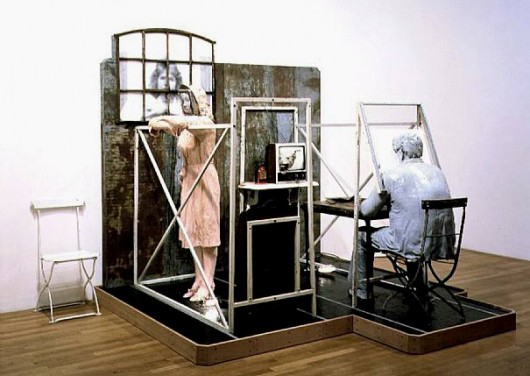
Guy:
There seem to be small bits of new appreciation for that work. (Freidkin is having a retrospective at Venice this year, with a new cut and print of Sorcerer). What struck me about that film (and I found it a pretty stunning work when I first saw it) was that it was the end of a certain sincerity in narrative. I wrote about this a couple postings ago I think. There is now an ironic detachment, and an attendant lowering of emotional gravity. The work doesn’t pull you downward into yourself, physically. I dont think irony lends itself to experience work in the body.
It suggests an other era in several additional ways. The sense of men being allowed to start over. This was a topic Eddie Bunker used to mention. The growing police state apparatus means you cannot escape and create a new identity anymore (or its just much much harder). The Foreign Legion looms in the imagination as a place of tainted regeneration. It is also, of course a purgatory of sorts A remnant of colonial domination and hence the payment is transferred in guilt. The landscape of Sorcerer is purgatorial. Men escaping failure, and mistakes. And then ending up in a mining area in South America run by a US owned petroleum company, whose representative is a former Nazi. There are so many layers here, and all of them are allegorical. That is what, that allegorical dimension, was erased with Star Wars, The end of directors such as Freidkin and Boorman, and even Frankenheimer, was the onslaught of the George Lucas cartoon. Digitalized and infantile. That’s the other thing, Sorcerer is not childish entertainment, its not infantilizing. The Lucas franchise was, and this is 1977, the onset of the infantilizing of american culture. It was clearly there already, in numerous ways, but it intensified mid seventies. Star Wars leads directly to the consoldiated business model studios embraced for summer block busters
The narrative of Socerer is without optimism. It is about a sense that people can share work on some basic level, regardless of reward, and simply enoble the task. I think the spectre of corporate oil is hovering over the film, a toxic almost bacterial cloud that they all know will fall upon them eventually. What the Lucas franchise did, I think, was make all narrative childish. There is an adult suffering and sorrow in Sorcerer, and nothing in Star Wars.
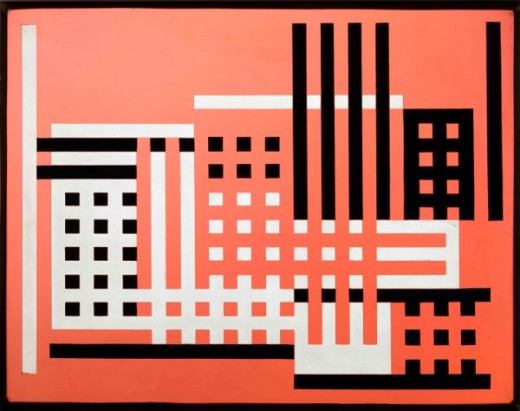
Also, Speilberg’s Close Encounters of the Third Kind came directly after this and that was the final nail in the coffin of new American cinema. Freidkin had intended Sorcerer as the first of a trilogy. The others were never made. So, Lucas and Speilberg are the symbols for the last act of infantilizing the culture. And today, I see this in everything. As I think on this, I see how the sense of failure was erased in US culture. In film especially, that theme, the idea of career success came to be the only thing of value. I don’t think today there is any studio that would have even the slightest interest in a story such as Sorcerer. Now, to bring this back to this formula question. So, this new book is sub McKee. Its even dumber than McKee and i didnt know that that was possible. The lack of literacy today is really fascinating because I have a sense that the new totalitarianism of the US society, or a legal apparatus utterly corrupted, is more easily swallowed by a public less able to digest narrative. The public intellectual commons, civic discourse, has been reduced to very primitive stories of punishment or childish humor.
Also; you have the implication in this Snyder book, that “beats” matter and little else. So you have political narrative where a president can say one thing and it is accepted, even while he does and says contradictory things. Obama can wax *sincere* about Trayvon, while praising Ray Kelley. People find justifications for this. Or, more likely, they dont notice it.
I think the problem you describe about “common sense” is a huge ideological prompt, really. Common sense means what? If you look at the McKee or Snyder books, the question begged is what is the criteria here? Well, its to write a film that is successful. The books are written from the pov of producers and marketing people, not writers.
Here is a quote from Henry Giroux:
“As the anthropologist, David Price, points out, historical memory is a potent weapon in fighting against the “desert of organized forgetting” and implies a rethinking of the role that artists, intellectuals, educators, youth and other concerned citizens can play in fostering a “reawakening of America’s battered public memories.” Against the tyranny of forgetting, educators, young people, social activists, public intellectuals, workers and others can work to make visible and oppose the long legacy and current reality of state violence and the rise of the punishing state. Such a struggle suggests not only reclaiming, for instance, education as a public good but also reforming the criminal justice system and removing the police from schools. In addition, there is a need to employ public memory, critical theory, and other intellectual archives and resources to expose the crimes of those market-driven criminogenc regimes of power that now run the commanding institutions of society, with particular emphasis on how they have transformed the welfare state into a warfare state.”
JS
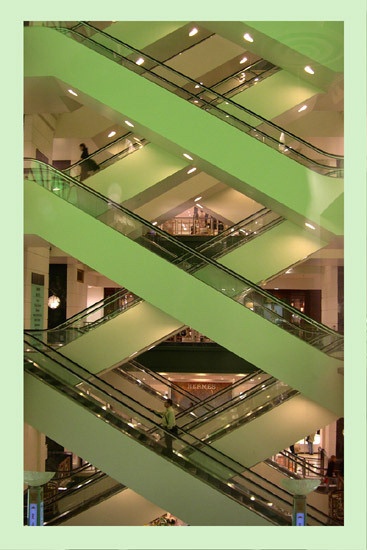
Everything you say is true, John, and your comments make me want to focus in a bit more on that night image of Scanlon stumbling along the road toward the petrochemical inferno of the mine. The reason the image is so poignant is because it contains a powerful intensive differential between fate or social role on the one hand, and the open-ness of identity on the other. Scanlon is an instrumental cog in the machine of petrochemical capitalism on the one hand, and an open potentiality on the other, and Friedkin has collapsed or compressed both of these irreconcilable versions of Scanlon into the image of the man staggering exhausted along a desert road carrying a box full of nitro glycerin. Coming where it does in the film, the image makes real for us the absurdity of the idea that a man can be reduced to his fate or his social role, and yet this very same absurd idea serves as the core justification for the vast machinery of capital accumulation in which Scanlon is entrapped. And a variant of this very same absurd idea also determined the reductive fate of Friedkin’s film, and the demise of auteur cinema – determined, in other words, the downward trajectory of the art form in which Friedkin was working. The “popcorn” movie with it’s infantilizing Blake Snyder formulas represent the narrative arm of neoliberalism, acclimatizing the public to the deregulatory, class-warfare-from-above political initiatives of Reaganomics. There are different versions of irony, and against the postmodern deployment of it you decry I would table the sober and in some ways terrifying irony of Scanlon on his dark road with his box of nitro – there’s something so sublime in the explosively of that image – it contains the poetic irony of transformation.
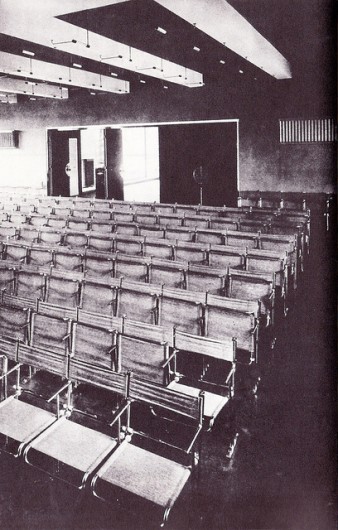
Bauhaus theatre, designed by Walter Gropius
Okay, so one interesting line of inquiry brings us back to a statement of this theme early in the film. We’re in Paris with the investment banker who’s life is about to unravel. While fielding panicking reports of the impending collapse of his firm, Manzon and his wife discuss a story about a Foreign Legion soldier who kills a local. Distracted by his own situation, Manzon shrugs off the story saying the guy was “just a soldier.” His wife responds that “no one is just anything.” Friedkin is quoted in the film’s Wikipedia entry identifying this statement as the film’s central theme, and I’m struck by how this falls precisely within Blake Schnyder’s beat sheet formula of how to write a screenplay. It would be easy to get lost in the idea that it’s the kind of theme embraced by Friedkin that sets Sorcerer apart from what has become the dominant template. We could talk about how Lucas/Speilberg plundered a handful of superficial Jungian tropes via Joseph Campbell’s Hero With a Thousand Faces, ringing the changes on “the hero’s journey” the way graphic designers ring the changes on the famous “golden section” as they design corporate logos…but I think that misses the real issue here. What needs to be addressed is, instead, something like the will to formula or, perhaps, in a more Deleuzian register, becoming formulaic.
The philosophical issues are thorny but also crucial. A work of art like Sorcerer is a singularity, and the hidden cultural imperative behind the assertion of formulaic hegemony over cinema in the 1970s had to do with bringing the singularity of artistic expression in its most popular medium under the hegemony of the universal-particular rubric of instrumental reason. This was not some conscious program, but it was very definitely a coherent cultural dynamic, of a piece with the rise of neoliberal economics and of Reagan and Thatcher and all their ascendency entailed (huge expanse of military-industrial and prison-industrial complexes, etc.) Friedkin’s odd instinct to name his film Sorcerer – a choice he was pilloried for – seems unbelievably prescient in light of the strong cultural resonances of the film, which propagate forward into the current political moment. I’m thinking here of Isabelle Stengers’ view of capitalism as a kind of “sorcery without sorcerers,” a system defined at every turn by infernal alternatives like the one Scanlon and his compadres are forced to make, and by the subtle eliding of distinctions between singularities and syllogisms – the encoding of values that wreaks havoc with relationalities at every scale of the physical world. Friedkin’s prescience is uncanny, down to the name of the town (is it part of the Cluzot or the novel?): Porvenir or “to come.” The miserable social tide pool of this town, dominated by fascist recidivists and corporate thugs, and surrounded by environmental catastrophes, has increasingly become the norm on a global scale…and yet the popcorn movies keep on coming, each one indistinguishable from the last.
GZ

Guy; I keep thinking about the ways in which studio work felt different thirty years ago. In a sense, it is similar to theatre thirty or forty years ago, when Herbert Blau was an active figure in the US theatre. When there was more than the idle indifferent tokenism of foreign theatre you find today visiting the US. Today, the landscape is a cinder strewn wasteland of, well, *formula*. In studio film, the poetics in a film like Sorcerer are impossible now. Some idependent US film maybe, and certainly I think quite a lot of European and Asian work, and Russian, is expressing something that feels alive. I feel no life in US film. But worse, I think, you see this formula thinking (the Blake Snyder effect) in critical writing about film. A recent issue of Jacobin, in theory a left publication, had this apologia for the The Lone Ranger. Now, beyond what is rather stunningly obvious racism (STUNNINGLY OBVIOUS) the film is hack junk. It’s a Bruckheimer film for christ sake. Talk about formulas.
So, what does that mean? I suspect that this is why I believe art and aesthetics are important. The studio turns this shit out and they know they will make a profit. Maybe not as big as they’d like in the case of Tonto and that masked man, but still a profit. No, that we understand in a sense. More disturbing is this new infantile consumer-fan-critic.
I think what I keep calling sincerity, is also linked to a Utopian idea in a sense, and artworks that suggested something OTHER than the status quo. If you don’t suggest other, then you are part of the project of enforcement for the status quo. Film is a difficult medium because even with advancing technology, its just not cheap to shoot a movie. To get past the gatekeepers of the industry, women, minorities, or just poor kids in general, had to sign on to the system. There are various mafias operative in media, but all of them, like the economic model, have consolidated. The days when a Val Lewton might find his way onto a sound stage to work props and end up soon directing for that studio are long gone. Having a discussion such as thing is fun because one can sort of meander along with more side bar issues than normal. If a reviewer cannot look at Gore Verbinski’s body of work, and not recognize the paucity of taste, the vulgar sort of social crudities and wholesale stupidity at work, then you have to ask, why is this person choosing in life to work as a film reviewer? A reactionary racist evocation of ‘white=good’ storytelling is given excessive praise in an erstwhile leftist journal. How does that work? Part of it goes back to the scene you describe in Sorcerer. The choice of graininess, the Tangerine Dream soundtrack, and that, really, what is captured in this film…essentially a good piece of pulp on the surface, was an almost Wagnerian overreach, this madness of a 12 month shoot, over a thousand set ups, and Freidkin’s now legendary grandiosity — personal and cinematic. But, you see it on the screen. No CGI, no sound stages (which is amazing when you think about it) and so this still genre narrative becomes something more and that small choice of camera distance, choice of stock, and really, this sense finally of absolute dread. I think there is some work to which one surrenders.

Sorcerer, Dr. William Freidkin, 1977
I have been thinking a lot about theatre, again. The idea of space. That the allegorical links with space, somehow. But I wanted to touch on architecture, too, but only in this sense: I think one of the real failures of critical writing on the arts today is in the insistence on specialization. Film critics (sic) don’t write about painting, and yet there is an obvious connection. This is mostly because those writing about film, are simply reviewers. It’s commodity recommendations. Help the consumer. But it seems without the sort of curiousity one found in critics that once could move between poetry, theatre, dance, and history .. music and architecture, you end with these small little enclaves of what are, in the end, glorified hobbiests. The flip side of this is, I suppose, the extreme amateurism of much cultural writing — where there is a tone that conveys the clear UNimportance of what is being discussed. What does the expression “Renaissance Man” mean today?
I was looking at a lot of Bauhaus stuff recently, for no particular reason. And early 20th century architects. I feel as if there is something in people like Loos, and Gropius, that hasn’t been quite evaluated fully yet. Loos only really did a few structures, really. But he said,
“Only a very small part of architecture belongs to art: the tomb and the monument. Everything else that fulfils a function is to be excluded from the domain of art.”
He saw building in terms of theatre. Of encounters, of a human scale that was always in frame. And this is what fascinates me. It wasn’t art per se, because I think the sensibility suggested the psychoanalytic. That in this space one has continuous re-opening of a something. And it is, in a sense, what happens on stage. Theatrical space is the sort of ‘secret meaning’ of both ourselves and society — for it cant ever be just one. The conscious mind is fraudulent and art is a search for something unconscious, or at least that has shed the censoring mechanisms of super ego, etc. Wittgenstein’s building, that he designed for his sister I believe, was (as one critic wrote) a laboratory for living. His sister said it was perhaps a dwelling for Gods (she didn’t herself want to live in it). It is important to see the changes in sensory hierarchies I think; as this visuality that has always been privileged is now eroding. I mean once films were borrowing narrative ideas from books and paintings, today books and paintings borrow or reference or are based on film, and in fact everything is sort of absorbed by this idea of cinema.
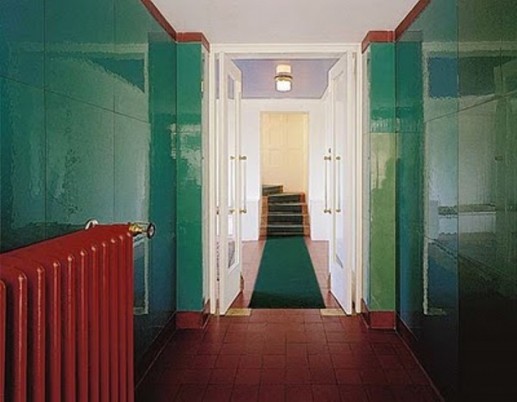
Steiner House, Aldolph Loos, architect and designer. 1910
Loos’ famous essay, Ornament & Crime, which was a reaction to the decorative art nouveau of the period in Vienna,in which the crime was superfluous ornamentation.
It seems to me that both right and left suffer frpm the Bernays effect;, the hyperbranded reality that increasinglly robs people of a sense of place in the landscape. I watch most theatre today and I see actors as if on a screen, reproducing a TV show, or worse, a commerical. Its flat. Emotionally, and spatially flat. And I wonder how, say, the training of how to look at things, the not looking carefully or deeply because there is always the undercurrent of mass production, indifferent design usually, and endless reproduction of things that are very close to identical, and all of inferior quality, (ala planned obsolescence). I mean I suspect that the eye trained to ‘not’ see, impatiant and anticipating the next image eventually stops seeing with care. The eye stops focusing attention on characteristics of design, or discriminating in any way other than the practical, or what is deemed practical. It is seeing with anticipation.
It is the same with audiences when they see and hear a play. They do not listen carefully. People in general do not read carefully. Fast forward to the end. There is an impatience born of this addiction to novelty and newness. Where is the next thing? where where where…..? The actual looking, the focused attention, is reduced to simply the most pragmatic level. Check for texts, emails, whatever. Input. A house is seen much as a cheeseburger. Nice cheeseburger. Lots of swiss cheese, fresh looking bun. But that is all a cheeseburger can give you. That is an appropriate cheeseburger response. So I think what the culture industry does, the “entertainment” industry, is to validate this experience of familiarity. Its good if you’ve seen this before. Only a little bit different (as Godard said). Or, as that reviewer in Jacobin put it, “I dont want to get all fancy”. No, just give me my favorite cheeseburger, my favorite toothpaste, and then when buying a house (well, the few that can anymore) the choice is guided by completely other criteria.
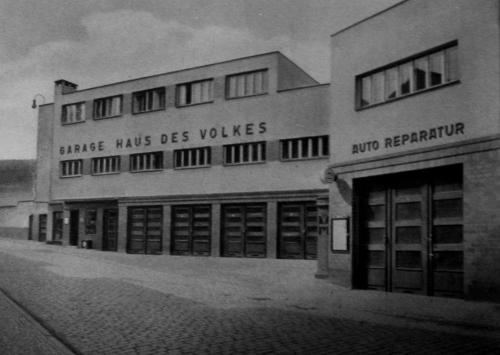
Haus des Volkes, Architect Alfred Arndt, 1929 appx.
And this is about the place where contradictions occur. The formula doesnt really provide any spiritual nourishment. Its junk. It is narcotizing. And this training in ‘not seeing’ means that when forced to make an aesthetic choice, the choice will be for garish and loud and lurid and excessively decorated and shiny and just vulgar. It must be loud and busy and exaggerated to allow this impatiant untrained eye to see it at all. Everything has bells and whistles attached, in some way or other. It’s an interesing question, this “target audience” idea. It’s too much to get into here, but at what point did that phrase start to seem natural?
There is an interesting article here (from an interesting project)
http://thecityasaproject.org/2013/05/hannes-meyer-co-op-architecture/
JS

The 7th Victim, Dr. Mark Robson, produced by Val Lewton 1943
Yes, I completely agree about the over-specialization of art criticism and just about everything else, in point of fact. I was going to pick up with the way in which the formulaic is inert and does not draw us out in ways that wound us…which is what art does. I think Deleuze’s extremely nuanced analysis in the two Cinema books is the deepest exploration of what exactly it means for art to “draw us out,” so I’ll take a swing at explaining some of that. But first I want to get into some of what Isabelle Stengers talks about with regard to the issue of specialization – the scientism that advances through all the various branches of thought and discourse. I’m thinking of the two volumes of Cosmopolitics that she wrote in the mid 1990s but that were only translated a few years ago, where she goes thorough the metaphysics of utilitarianism that is the engine of scientism as a system of belief (as opposed to a technical practice). What’s so insidious in our debased version of materialism – a materialism of de-animated matter, of death, of necrosis – is how this metaphysics conceals itself within advances in technology taking over from Christianity as a vehicle for Platonism (Unity at all costs!) We can have our heaven (i.e. unity) in the future!
The importance of distractions that you mention – of distracted thought – is actually crucial to this cultural agenda – we can’t notice that the Utopia of technological unity never actually arrives, and that what we get instead is a nightmare. Also, attention must at all costs be degraded, because with attention the hidden latches and sutures become visible and the totality is suddenly vulnerable to decomposition. Scientism exists to trumpet the “laws” of science because those laws have to do with causality – these “laws” are, in other words, comforting stories we tell ourselves…and the chief story today is the infantalizing story of the comic book, and it’s good-evil dualism of cartoon heroes and villains. Stories masquerading as scientific laws? With a nod to Giorgio Agamben we might call this liturgical science, laying claim to empirical prerogatives of indicative science – i.e. science that is purely descriptive about what happens in the physical world. Stengers points out how measurement is itself inherently reductionist: measurement IS the impulse to reduce and to reify difference – measurement is the capture of difference and this issue of capture is where Stengers arrives at her imagery of sorcery – of capitalism as a system of sorcery.

Stengers is trying to get us to see modern scientism is a set of historically based standards and laws similar to how Foucault addressed the interweaving of power and knowledge in the social sciences. It’s as if she’s commandeering the Kantian vehicle of science and handing the steering wheel over to Nietzsche. Agamben is very strong on the theological underpinnings of much of this – laws as bootstrapping devices that seize hold of us through a kind of liturgical force. Deleuze and Guattari devote a good deal of A Thousand Plateaus to exploring these kinds of “apparatuses of capture” which operate in opposition to rhizomatic multiplicity and expressivity. In the two Cinema books Deleuze addresses the transformative impact of art in general, and of the great works of cinema in particular, through what he calls the Time Image in its relationship to the Movement Image. For me, these books are Deleuze at his most challenging, partly because (if I read him correctly) he’s viewing writing film criticism as a form of philosophy, as if cinematic expressivity, very much including its technological and machinic elements, were itself a form of thought. This form of thought is made up of images that are nothing but intervals – temporary striations – in an otherwise smooth and un-segmented material flow. The distinction between Movement Image and Time Image has to do with whether or not these intervals are organized or disorganized. Unlike the Movement Image – which served as the basic building block of cinema up until the post-war era – the Time Image is disorganized or “smooth.” The Movement Image has to do with time as we often think about it: a sequential affair that can be measured in conventional ways. But whereas the Movement Image proceeds by narrative, the Time Image undermines and eliminates the cause and effect relationally of narrative. The arrival of the Time Image as the dominant register of cinema is what Deleuze places with Welles, and it’s because I’ve never responded directly to Citizen Kane that Deleuze’s analysis rings true to me – the film’s very obvious scrambling of narrative is what explains its huge impact.
How can Deleuze claim that a regime of images is non-narrativized? With the arrival of the Time Image it suddenly becomes possible for intervals to exist in a non-narrative fashion. Something opened, and we now take it for granted because our mode of engaging with experience has been so fundamentally reconfigured. The deterministic, clockwork universe of Newton and Descartes as compelling a psycho-social rubric broke down with the arrival of the Time Image, which coincided with Hiroshima and with revelations about the Nazi atrocities.
In purest form you see the arrival of the Time Image in heightened form in the great European filmmakers – Bresson, Fellini, Antonioni, Bergman, Tarkovsky – those long atmospheric passages in which the art form captures something inexpressible in any other way about life and its temporal aspect, a quality that can retroactively be located also back through cultural history – in the paintings of Cezanne or Velazquez or Montagne, say, or in Melville or Blake – but only because of what happened post-war.
And yet the Time Image is also what’s so great about auteur genre films post-Welles. It’s what gives the action films of Peter Yates, for example, a claim on our attention, or any number of other Hollywood journeyman auteurs. This kind of non-narrativized interval is found throughout Friedkin’s films, woven into the fabric of the action sequences and the procedural narratives. The same goes for Frankenheimer and Peckinpah – the close of The Wild Bunch is all about sudden non-narrative intervals blasted into a scene of utter action-driven chaos. And I think eliminating this kind of non-narrative interval is precisely what the rise of the neoliberal aesthetic of Speilberg and Lucas was all about – their genius lay in finding a way to re-orient cinema in a way to return it to its grounding in cause-and-effect narrative that had prevailed pre-Welles, a feat of cultural reductionism that has no equal. The only way to accomplish the negation of the Time Image is via a formula, because the Time Image is the antithesis of the formulaic.
GZ

Guy:
I think what you say here is related to the degrading of language. I have been thinking recently, how language isn’t just losing meaning. I mean that has been true for forty years. Its advertising, and political double speak, but it is also deteriorating as narrative. In my last post, in the comments, Molly suggested that language had now become a sort of substitution for visual montage. I think this is correct, even if I dont quite grasp the implications fully. However, if you look at this terms of film, and the huge impact and influence of film (and the volume of film produced) then it makes sense, and it’s clearly coupled to social media and platforms like twitter, or just texting and emails. Its very much like the evolution of Egyptian hieroglyphics. Except in reverse.
There is a quote of Derrida, “It is thus the delay which is the beginning”. I think that what this new scientism does is to somehow both stop vision, and privilege vision (and visuality has been the domain of power as well, of order and associated with control) — except that now vision is deteriorating at the same time. As a society we continue privileging that which is being degraded and abused with the other hand. And this is partly the logic of Capital in a sense, for it’s marketing. Science (junk science) and marketing are very close and intertwined. I think Lucas and Speilberg were instinctively marketing managers. That’s what they did. They made extended commercials and these adverts were selling a sanitized world of instrumental logic, that was pounded home again and again. It was also a white world. It was the romanticizing of suburbia. But more than that, they were validating this idea (through the form of their work) that one need not or should not, look too closely, because we have technological apparatuses to do that looking for us. The camera for one, but microscopes and MRIs and so forth… and a whole class of “expert” to actually program these apparatuses. Now, an MRI is an amazing machine. Just amazing. And that is the product, interestingly, of the irrational almost mystical end of science. The MRI is all just mathmatics. The sort of plebian science of corporate research groups is the sort of pure reductiveness you mentioned above. That one can “weigh” something, or “measure” it, and thereby capture its essence. THAT is WHAT it IS. Period.
So, if we go back here to formula creativity, and to eroded language, it seems to fit pretty seamlessly with corporate reductionism, and further, this degraded text culture can only navigate narrative through these new glyphs. I continue to marvel at how badly written so much stuff is today. From Jacobin to The Wall Street Journal, to Rachel Kushner’s idiotic novels: this is all mush. There is no spiritual underneath, no Loos’ian clarity. And no unconscious.
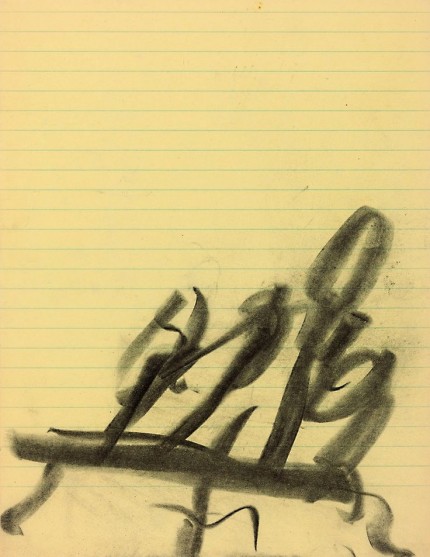
I think there is something that gnaws at people in this manufactured narrative. The usual dominance of vision (The Spectacle) is threatened in a sense by work that makes us aware or feel the temporal as …well, in a sense, as what it really is, a delay, a difference (per Derrida), or a deferral. This is of course also Lacanian. But however one wants to examine it…even in Freudian terms (deferred action), it includes our experience of the uncanny. It is directly related to dreams, and I wonder if its not true that everyone’s dreams are osteoporotic, are unable to carry the repressions, the illogic, and fracture in places. Fracture and shards of mental bone (to push this metaphor) surfacing, tearing through the collective denial, like jagged mental spikes. I mean we have this surveillance state now, a total NSA lockdown that tracks our movement, our communications, and how does this effect our dreams? Artists like Paglen instinctively go after this, but I think it is why learning to *read* asethetically, is vitally important.
Leo Steinberg said (in 1972): “It is probably no chance coincidence that the descriptive terms which have dominated American formalist criticism these past fifty years run parallel to the contemporaneous evolution of the Detroit automobile”.
The artist cannot say anything meaningful without also violently opposing the status quo, the administrative order, the diagram and the blueprint and the formula and recipe. These are relics, totems, of this surveillance totalitarian state. People can read instructions to put together an ‘Ikea’ table, but really nobody reads them, they look at the visual instructions. For that Ikea text has no meaning. I’ve said this before, here. Now we have Speilberg, (via Blake Snyder) who is a sort of filmic Ikea instruction sheet. Screw sentimental cliche into act two board. That is almost a starting place. But it is also a film where people talk in what is a dramatic equivalent of a set of Ikea instructions. And of course, the idea of realism, naturalism, is raised here, too. In one sense (maybe the primary sense) this construction of a “real” is built upon exactly these reductions you describe. It is a measured world.
I mean, if you want to put a doorknob in your new door. You must measure the door, in about a dozen different ways, and check for how the previous drilling was done, how deep the spindle has to be, and etc etc etc. Now, you then go and order from a shop that makes fixtures. And you specify what you want. This sort of keyhole, this sort of cylinder, and on and on. There is something very odd in this process. My question is, in what exact way did such an evolution take place? In which the division of labor meant certain things would be looked upon in certain ways, but more, the conventions of modern doors represent what exactly? The history of doors is really the history of hinges. Ancient African and Asian cultures had wooden hinges. But only the ruling class. Once metallurgy arrived, the aristocracy had more and better hinged doors. This history is obscured. I am sort of searching for the metaphorical meaning in this…so bear with me. Why have doors? Our dwelling is a phenomenological question; our primal alliance with the material world, and our corporeal selves. It is however, maybe, the most hidden part of existence. Occluded and mystified. And I believe theatre is partly connected in its core purpose in demystifying such things. Ive hated doors on stage. I never really explored why, I just instinctively disliked a character having to enter the play through a door. These are the sort of questions which would seem to be natural aesthetic areas — for doors embed our subjectivity in a sense. One must knock on a door, or not…and *enter* unnanounced. It is, actually, where Heidegger becomes most interesting. The door as border, as the partitioning of parts of the day, demarcating activities, and it is prohibitive as well. It keeps the dirt from work areas away from the chaste chambers of the owners. For artists it is exactly the indifference to such issues, such primordial questions, that is part of the foundation for the construction of kistch, for formulaic obfuscation. For the culture industry is in the business of hiding reality with an ersatz reality (it really is as if intellectual pesticide were sprayed over the creative process to kill the weeds of the Id).
JS

It’s funny you mention Leo Steinberg as he was one of my teachers as an undergrad and I took every single seminar he taught. Small seminars on Picasso and Michelangelo and other painters too, and, suitably enough, an honors seminar in my final year on the role of attention in art. There were about ten of us, and each session we’d each bring a slide of a painting and we’d project the slide and look at a single image for thirty minutes or discussing different aspects of what was in play and then Leo would weigh in and it was always remarkable. He was a dedicated sculptor originally, and he brought a kind of haptic intensity to his engagement with works of art – he handled them, turned them around, brought them close.
You mention the degradation of attention – yes, it’s is a huge issue, without a doubt. Much of our culture consists of machinic entities designed to degrade attention wherever it might stray onto sensitive cultural connectors or exposed wiring or sites in which new apparatuses of capture are being tested or deployed. Trevor Paglen, who you kindly introduced me to, is relevant here: the vast secret surveillance state has mushroomed in the darkness of our ignorance and its future growth requires that we cultivate an ability to ignore even more of what goes on under our eyes. It’s interesting that in Tibetan Buddhist terms ignorance is the root poison, the one that gives rise to the other two: greed and aggression. You’re also completely on target with your mention of Edward Bernays and the birth of advertising as the source of this astonishing ability we have developed to completely ignore species-ending and entirely preventable calamities not far off.

Roman Theatre, Khoms, Libya
It’s important to recognize the psychological correlate of our Olympian feats of inattention – how reactive emotional patterns exist to degrade our attention as it approaches the joints and connectors of the self-images that govern our inner lives. The two levels – psychic and social – are nested complexities that mirror each other, which is why radical action has to begin “at home.” You mentioned Brecht in a previous entry, and A Man’s A Man in particular is a dramatic exploration of the constructed entity of the individual…the only problem being how drastically over-simplified the process of construction is in Brecht’s treatment. The affective patterning of consciousness begins at birth – emotional and affective trauma mark our awareness and experience begins to flow along these scars, the way a flow of water along a bank of earth forms gullies that begin to widen. We are formed in reaction to emotional trauma and much of our behavior is determined by the imperative to avoid triggering the somatic residue of that trauma. You can trace the underlying implications of this back to the empiricism of David Hume which caused such a big ruckus, particularly how experience actually shapes our organs of perception. So, in other words, we are certainly psychic constructions or assemblages, and with the right level of skill we can no doubt be decomposed (like everything else) into component parts that might then recombine in a better way, but to do so is challenging in the extreme and infinitely complex.
GZ
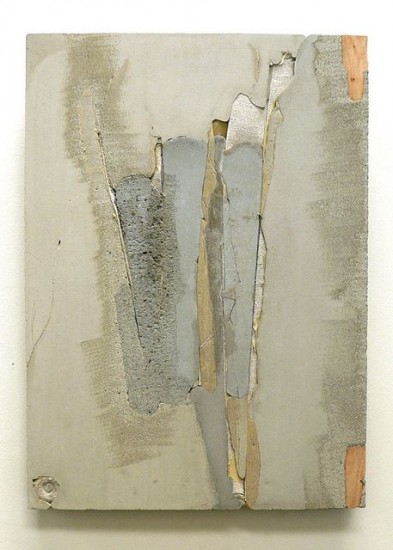
Right, Guy, see I think that’s of course true about emotional patterns. But I want to say a couple things more about theatre specifically, but it connects to your thoughts on trauma and emotions. I brought up doors, which is an odd topic in a way, but I am trying to get at something to do with space. We are humanized in space — by which I mean, in something that can open up, reveal itself. I suspect the manner in which western homes evolved links to the manner that authority was wielded — and there is an obvious puritanical (misogynist) aspect that is also a snuffing out of or smothering of the creative.
Stanley Cavell said an interesting thing (even a blind squirrel gathers some nuts), about painting and photography. He said…“..that in withdrawing from likeness, painting freed photography to be invented”. He is talking about ‘likeness’, and subjectivity. That a Manet, obsessed with reality, with a convincing representation of reality, was left having to give up on likeness because the pursuit was utterly dissatisfying. This isn’t quite right, but it reminds me of Lacan’s discussion of anamorphosis — the short version of which is recognizing our incompleteness in the image, painting, photograph. The invention of photography is a fulcrum of some sort regards this topic. Francis Bacon said “Isn’t that one wants a thing to be factual as possible and at the same time as deeply suggestive or deeply unlocking of areas of sensation other than simple illustration of the object…”. Now, I do think that photography allowed painters to see a different kind of presentness in painting. They didnt have to be a likeness, and the entire Renaissance and Reformation and three point perspective mandate, and this meant to creating likeness and identity, in some sense (and Im hardly sure of this at all) that abstraction meant we were presenting ourselves to something, to a present, whereas “realism” was insistent on giving the world, presenting the world to us. In theatre, and we return to the door here, the stage is not presenting a world to us. It is not a likeness of the world. It is certainly not real. The performance is in its essentials, destroying that likeness. That is acting. Destroying the likeness to reality. And when it does this, when its not just a self-commerical, then a space occurs…and this is that missed encounter, it is also tragic. If only a minor tragedy, so to speak. It is an invitation to this expression of space. It is also linked to the unconscious through the persistence of trauma and how it is embedded in an opening-space. Lacan said the unconscious brings back to attention the realization that whatever is articulated or enunciated can never be reduced to what is articulated or enunciated in any one discourse.
I think modern theatre was returning, with Beckett and Genet, to something that was closer to Shakespeare. A door on stage is false. Knock. Come in. It disrupts this flow of the off stage from seeping in. I sort of idly wonder if this isn’t operationally the same in houses, and if there isn’t a gender reading to apply here. And I want to say, this is a very tricky idea when applied to film. But putting that aside, what happened with an entire Capitalist apparatus, an apparatus bent on inequality and manipulation, and violence, having to insist on the Bernaysian century in a sense, having control organically rise to a position of extreme importance was that this (what Heidegger called…) ‘standing reserve’ was validated. Universities, and corporations, and funding was all linked to data, information, calculations. The NSA Prism program is about ‘get everything’. One bit of info is no more important than any other. Take it all. And store it. And when we need it, we can go access this. And we can spend our lifetime playing with this Kafkaesque research. PRISM is much closer to Kafka than Orwell. Such thinking, such a creation is the exact death of presentness. So no wonder institutional theatre cannot abide a theatre-of-space.
Here is an interesting quote from Gunta Stolzl’s diaries. She was one of the only women at the Bauhaus, and studied drawing and painting with Joannes Itten. She became the head of the textile department at Bauhaus right before the Nazi’s forced her dismissal. Remarkable work she did with Marcel Breuer on furniture.
“…His [Itten’s] first words were about rhythm. One must first educate one’s hand, first make the fingers supple. We do finger exercises just like a pianist does. In these beginnings we already sense through what it is that rhythm occurs; an endless circular movement begun with the fingertips, the movement floods through the wrist, elbow and shoulder to the heart; one must feel this with every mark, every line; no more drawing that is not experienced, no half-understood rhythm. Drawing is not the reproduction of what is seen, but making whatever one senses through external stimulus (naturally internal, too) flow through one’s entire body; then it re-emerges as something entirely personal, as some kind of artistic creation, more simple, as pulsating life. ”
That is a remarkable quote. And part of what is remarkable is how obsolete such thinking is today. Who speaks like this? Reminds me some of Gary Snyder, when a student asked him at post reading Q&A, how to become a good poet. And he said apprentice yourself to someone really good at something that is material. A carpenter or mason. He believed it best to quit even thinking about poetry for that period. Such training helps eradicate the narcissistic.

Chair, by Breuer and Stolzl, Bauhaus 1922
This takes me back to what I said above about an experience of gravity in the artwork. The energy goes downward. Down into the body. Tragedy goes furthest in this direction. It is the stone cold floor of the emotions. Such teaching does not flatter the student, however. I think it is difficult in the U.S., or west today, to develop such relationships. We have sarcasm, irony, cleverness, and surface. This in turn leads back then to this idea of language losing meaning, or at least narrative. To read much critical writing today, let alone most modern fiction, is to see how narratives evaporate. Turn to sand. They stop being narratives. Whatever might have started to feel gravity, stops, floats back upward to the snarky surface as mere chatter. I think this is why there is so much comedy. It is clever comedy. It is tightly wound and hysterical and it is mean spirited. All comedy connects with cruelty, but today the human is gone leaving only superiority and a lack of compassion. I think the project of reclaiming a narrative that is present, in a sense, actually has to do with de-commidfying it, first. And there are various strategies. I mean Bernhard or Sebald dont feel like commodities — and I’m not even that in love with Sebald, but I can feel the seriousness. If you listen to Coltrane or Bach you feel the same thing.
See, I think that real practice — creating artworks as a practice of attention, has left the culture. Artists by and large dont seem serious to me, today. Few do. There are some of course, but you have to seek them out. What the NYTimes or Atlantic or New Yorker give you as artists are not artists. Jonathan Safran Foer to Rachel Kushner to Zadie Smith… are these people serious? Do they have ANY gravitas? Any authority? They are like telebtubby artists, sort of pet rock artists. And this packaging of the artist is one that hints at the cute. The tone is infantile. Cute. Childish. It is boyish, and girlish and elfin and wee bit mischievious.
JS

Teletubby artists, John? That’s marvelous…and it connects of course to our previous dialogues about placebo art and its function. I would totally agree also about art bringing attention down into the body – it’s inherently anti-Platonic that way, and connected to material practice, techne as the Greeks called it. The repurposing of material lies close to the heart of artistic practice, and this cuts very deep. Cormac McCarthy’s work is full of passages that celebrate the repurposing of material entities – it’s one of the links between his work and Melville’s. This is another through line in the genre films we’re talking about here, films like Sorcerer or Bullitt or The French Connection, in which everyday working men (and these are, let’s face it, male genre films) connect to the Time Image through a material engagement in the mode of repurposing. This is a big claim to make in passing like this, but I have a sense that there’s some truth to it.
And while I’m at it…It’s always tricky to make arching claims about Plato’s thought (or Aristotle’s, of course), but it’s tempting to view their philosophies as, to some extent, anxiety reactions to the groundlessness and the repurposing aspect offered up by the great tragic poets. The tragic hero is the repurposed tyrant, clearly – Heraclitean man. Then, a hundred plus years after Aeschylus, as Athens was being torn apart by its long conflict with Sparta, we get the eternal ideas of Plato and Aristotle’s oddly off-kilter account of tragic drama in The Poetics, an account that distorted our view of the art form for many centuries – up through Nietzsche, actually. It’s a very intelligent and convincing distortion, of course…and again, it’s rooted in material – Aristotle’s hylo-morphism separating material and form so that we have to find an explanation for what it is that segments the world into all these different entities…One of the things I love about Deleuze – and this comes very much from Nietzsche – is how material itself in Deleuze is morphogenetically expressive – form arises as the result of thermodynamic intensitivities within material at every level. Manuel DeLanda is great about this aspect of Deleuze – spot on as far as I can tell.
Okay, so this little detour actually connects to what you are saying about Prism. Prism – and the entire panoptic apparatus – is a psycho-social form that arises in the space of modernity to which it is dynamically linked, and that expresses a fundamental intensive arrangement at the root of the human species as a material formation. To me – and Deluzians often recoil at this – this is where Lacan becomes useful…because the Panopticon is clearly related to the asymmetry of the mirror phase. Deleuze and Guattari in many ways arose out of Lacan – they dispute the idea that we are in any fundamental way trapped by lack-based desire, but I don’t think they would dispute that lack-based desire is a powerful engine in the trajectory of modern culture. I don’t think Foucault would either – Foucault and Deleuze-Guattari just take the Lacanian analysis in the direction of Nietzsche instead of Hegel, which is always a good thing (in my view). Yes, the mirror-phase, Oedipal psyche is a very real assemblage – but it is as inherently decomposable as any assemblage, given the right skill or techne. Same goes for the asymmetric social forms of the Panopticon that Foucault traces to the quarantine regimes installed in the late middle ages to combat the bubonic plague. There’s no single Hegelian trajectory we’re on either – history is by definition a non-linear advance, a complex chaotic system that is defined by things like sensitivity to initial conditions and self-symmetry, but that is inherently revisable…again, given the right techne. This is something artists know and that idealist philosophers want to forget…and it’s why idealist philosophers are always, openly or in secret, the friends of tyrants and why tyrants want, as their first order of business, to nail shut the doors of the theaters.
Speaking of which, I was glad you came back to the issue of doors. I know exactly what you mean about doors in a modern context and even a Shakespearean context…but then I think of the importance of doors in Greek tragedy. It’s not a big contradiction because the point of the door on the classical stage is to seal off a space within the stage space, not to provide access to the outside world. This is where the tragic victim is slaughtered, his (or her) bloody corpse then paraded out in front of the audience on a sled (or whatever). We see this again in Ibsen when Hedda Gabler draws the curtains around the parlor where Hedda shoots herself…and it’s very different, again, than the door to the world outside that you are talking about. This makes me think that the whole effort in bourgeois drama to secure the stage space and fix it to a domestic interior is really one of the main effects bourgeois drama is reaching for. The melodramatic familial explosion that takes place inside these plays exist only to underscore the durability, the solidity of this framing reality. The domestic interior survives the onslaught of affective familial chaos. The basic walls and the ceilings and floors can be relied upon to contain the human mess. Nothing spills out. No extra-human forces are involved because – thank the gods – they do not exist (irony intended). The domestic interior created by this door is the tasty shell around the placebo of the bourgeois domestic drama, is what I’m suggesting – a wish fulfillment to take with us back out into the scary night.
GZ

Guy;
It seems to me that today one of the significant changes in cultural dynamics is that it is impossible to separate marketing and advertising from anything else…from art and, really, from daily life in the West. Fifty years ago one could have a debate about the effects of adverstising on consumers, and by extension on mass media (as it existed in 1960) and the arts.
Baran and Sweezy wrote (1966):
“It is erroneous to seek to measure the impact of advertising on consumers by studying their responses to specific advertising campaigns. That impact can only be adequately assessed if consideration is given to the totality of biotic urges and social forces which is responsible for the formation of human wants in any given historical environment. By setting standards of values, by establishing criteria of success, by molding its members’ fears and aspirations, society lays the foundations from which advertising as a whole draws its lifeblood.”
In the fifty or so ensuing years the merging of marketing, branding, hyper-branding now, is complete. Social media, the internet, and all the technological changes have rendered culture effectively saturated with a manipulated message and image. And it’s constant. So, when we look at the arts today, it is always through the prism (sic) of this fully realized commodified “real”.
Your observations on the “door” are very interesting. I think one fact is that we just don’t finally know who those Greeks were that sat at Epidauro, and watched new works by Sophocles.
Judith Maitland wrote (on scenography in Greek Theatre):
“In Aristophanes’ play there are copious references to props and few to décor. In the early stages of the play we infer that we are viewing an outdoor space, but do not become sure that we are outside the house of Praxagora and Blepyros until the latter emerges in line 311. In 877ff. the first of three hags arrives to take advantage of the new city laws and grab a young lover. A young woman angrily calls to her:
Hey, you rotting corpse! you’ve peeped out before I could!
What does this mean? From where are the hag and the young girl peeping out? Each of them is singing to entice a lover, but there is no clue as to where they are. At any rate, in 936-7 both girl and hag announce that they will withdraw. The young man arrives, amorous, and the hag indicates (946) that she will lurk and see what he does next. The girl meanwhile reappears, delighted that she has deceived the hag, who thinks the girl is still endon (inside, 950). It is hard to know what is meant by this, but it may only mean that she is leaning out of the window, for shortly (961-2) the young man pleads with her to katadramousa ten thuran anoixon (run down and open the door). As soon as he hammers on it, however, the hag appears. It is from her remark (976), that we gain confirmation that there is something to knock on: houtos ti kopteis? (Oi! Why are you knocking?). We have to assume that the hag has continued to lurk since 946. From this point, the action is squarely onstage in the unchanged public space. This space, however, is fluid. It begins as the area outside the house of Praxagora and Blepyros, seems to include another character’s house later on, and still later becomes the street outside the house of the girl.”
We could ponder for quite a while what exactly all this means. But I think it is clear that once theatre became ‘housed’, when the physical plant was a theatre building, an auditorium of some sort, indoors, that the pressure to contain that Dionysian energy was quite powerful. And eventually it brought the entire world of the irrational daemonic crashing down. Of course it was moved indoors to begin with for other reasons, the Enlightenment and its many ramifications, the Industrial Revolution, etc. But it feels to me as if this hyper branding and a world in which even identity is mediated by the commodity form, that today institutional artworks are mostly of no more importance than a detergent commercial. This is not to say there are not artists out there trying to make use of this material. One senses in a lot of installation art something of this impulse. The disturbing part of this is the bio-energetic, the bio political effects. Those quarantine policies were the precursor to what we see today. The kettling of demonstraters, and certainly what we saw in police and military response after Katrina. Those policies of control were born of a desire to control people more than the plague. The plague was a useful catastrophe, as was Katrina. And it is suggestive of this new feudalism we are entering. Here language enters again. What happens when language is so degraded that is cannot create a meaningful narrative? I keep returning to Kafka of late, because those parables captured presciently the loss of autonomy we all (I think) experience today.

Blake Snyder
Perhaps it was the hinge we should focus on. I say that sincerly. Perhaps its not doors, its the hinged door that became a symbol for a locking out of something. The history of hinges and locks might be a good phenomenological course to teach.
Culture is now largely controlled and molded by corporate managers. It is a culture whose content is subject to focus groups and surveys. The panopticon is chemical as well, now. A psychological quarantine, and a medicalized set of justifications for the zombification of the surplus population. The rise of and worship of the robotic warrior cop. But I wonder if the effects on a population subjected to constant propagandized media and PR hasn’t developed a degree of immunity. And if those who manufacture it havent themselves become a new version of the walking dead. It may account for the dramatic increase in depictions of violence and of increased sexualized images. The public ‘sees* less and less of this adumbrated anti-narrative presented, and so the manufacturers of this stuff dial it up one more notch to somehow mediate this blindess. I suspect there is more complex psychoanalytic explanation to this.. fetishizing of certain depictions of violence. Fetishism is always a disavowel. In Freudian terms, the refusal to accept (to see!) the mother doesnt have a penis. The disavowel of reality transposes further into suspense/fantasy (and I feel there is, in film and TV, a drastic increase in forced suspense), I feel as if the corporate white power structure that manufactures “entertainment” isn’t, in addition to other things, expressing something that feels masochistic to me. The audience is looking back. I don’t know. In any event, the artistic form seems to lag behind. Meanwhile the gatekeepers of academic culture turn out teletubby writers and poets and filmakers.
The White House cannot build drones fast enough, and domestic police (many recently returned from killing sprees in Iraq or Afghanistan) react in a grotesquely exaggerated way, shooting pets, and beating woman who might have complained about a traffic ticket, or most likely, shooting black teenagers. Or just throwing more of the poor in prison. Indeed I think you are right that asymmetry of our primal trauma…that THAT IS our primal trauma in a sense and continues to be recreated and under Capital, the material forces serve to intensify the trauma, not heal it.
I leave our discussion here, with a final addendum…
http://dissidentvoice.org/2013/07/military-deviancy-war-trophies/
JS
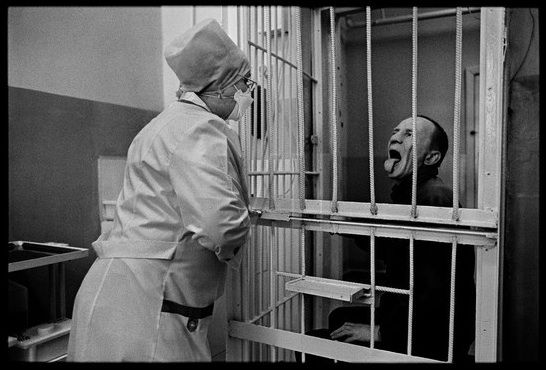
Correctional Unit 1, Tomsk, Siberia
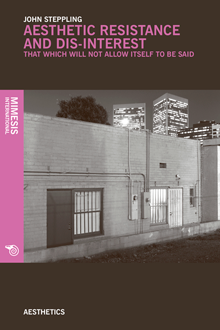
I’m so glad you guys have chatted about ‘Sorcerer’. Thank you !
My question is where does compassion plays into these works. The essence of a “Formula” in cinema seems to eradicate a sense of compassion, or eros, or openness. It’s thanatos on steriods.
Friedkin was hated by most of the crew during the filming of sorcerer (according to peter biskin’s book). One day during filming, one of the extras ran over a pig during a take on a carriage. Friedkin called cut and rushed over to the pig, hunkering down, crying for this dying animal. The crew was not pleased that he cared more for the pig than his workers on set.
It seemed to me, he had this primal compassion mixed with a deep distrust of both men and especially women.
The end scene were scheider dances with that lady…. it’s beautiful in a tragic way.
This is really a great discussion, Gents, thanks for posting it. There’s a lot in here but the thing that I wish we would talk more about is the loss of the expert critic. I miss the days when the people adjudicating culture (particularly cinema because, as you say, it seems that everything else, theater, politics… war, is in reaction) were smarter and more knowledgeable and well versed than most of the audience. If the overcrowded babble of common opinion wasn’t flooding our culture, would cinema be better? Would our culture? Would the block buster have faded away in favor of better movies? Could it still? I heard the other day that Spielberg and Kasdan have come out decrying the state of movies today, claiming the model (“Formula?”) is broken owing the failure of, I think, seven, summer “block busters”. When they talk about the failure, of course, it’s a failure “at the box office”. Not a failure of the intellect of the film makers. Not a failure of imagination. The failure, tacitly, it seems, is that of the damn movie goers. Like Hitler blaming the fall of Berlin on the failure of the citizens. It reminded me of the story of the Costa Concordia which sank off Tuscany in 2012. When asked why he and his crew abandoned the entire company of passengers, sailing off in the first life boats, the captain said, in essence, “Some people are too stupid to know when to leave.”
Thanks for pointing out the culpability of Spielberg and Kasdan (and Lucas and…) in diminishing american cinema to the corporate sausage factory it’s become. In a perfect world, some bigger authorities (critics) would have long ago decried the greed of the block buster and, maybe (maybe) a slightly more educated audience would have long ago stopped going and, maybe (maybe) there would only be one or two iterations of spider man or super man or bat man failing at the box office this summer.
http://journalofnostalgia.com/2011/11/23/the-architecture-of-entrapment-jane-and-louise-wilson-and-stasi-city/
I saw The Sorcerer when it came out and was transfixed. I never forgot it. Here’s the strange part: I never understood what Friedkin was after, even to this very day. I too miss the erudite critic, but social media has placed everything in the court of public opinion, and while I would argue that’s a good thing, it doesn’t exactly raise the bar on art. Lowers it rather; the groundlings are now the arbiters of taste. Heard Jonathon Franzen talking about this in Cartagena a few years ago.http://thenotion.ca/franzen_epublishing.html
Really enjoying the writing on the site. Am delighted to find kin ship in appreciation of the moment Scanlon finally arrives at the site of the fire. Id just like to make a correction that the music used to such powerful extent here wasnt in fact Tangerine Dream, who done most of the soundtrack, but a piece by Jazz pianist Keith Jarrett, from a pipe organ Improvisation called Hymns/Spheres – 3rd Movement. Friedkin layered other parts of the same track throughout.